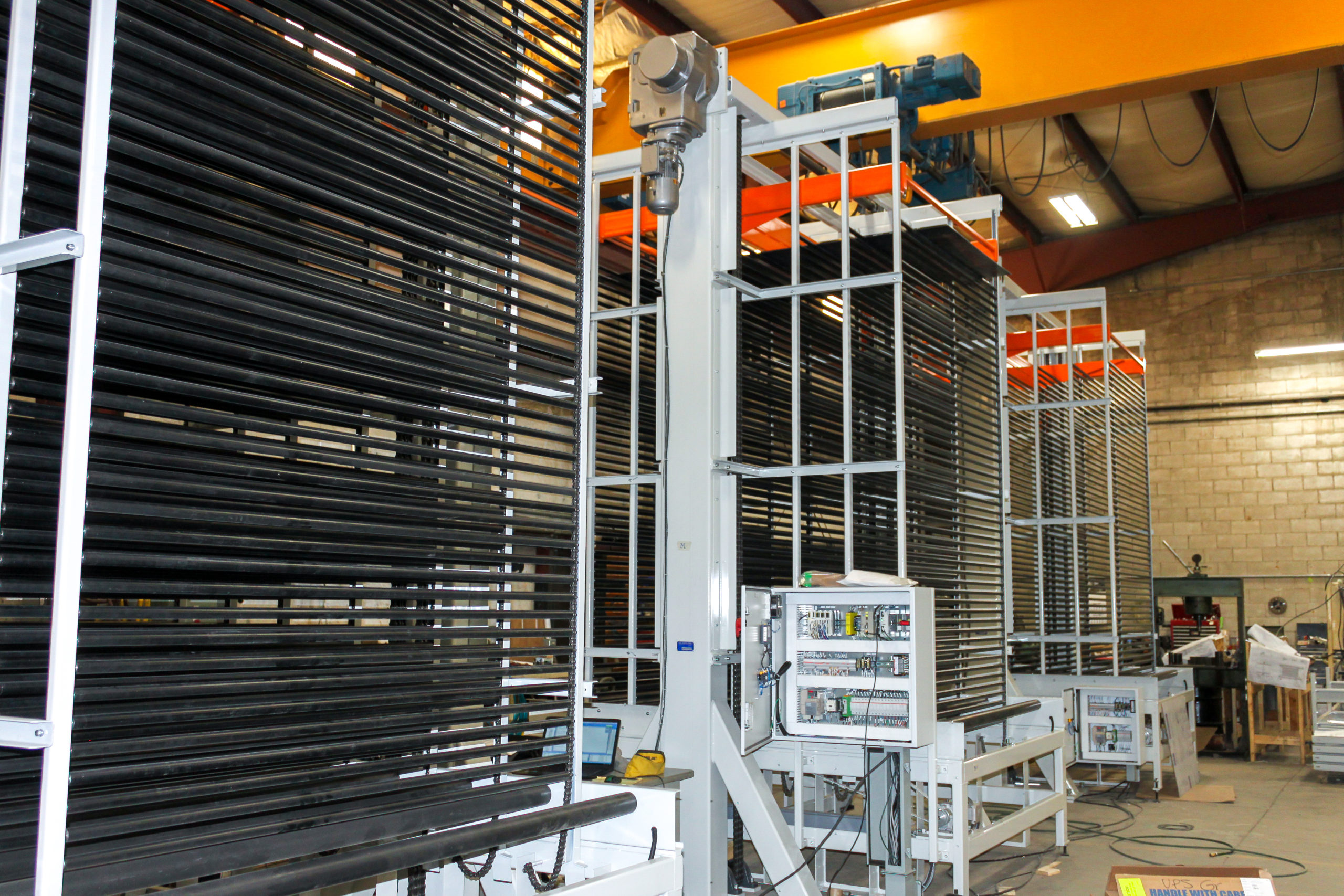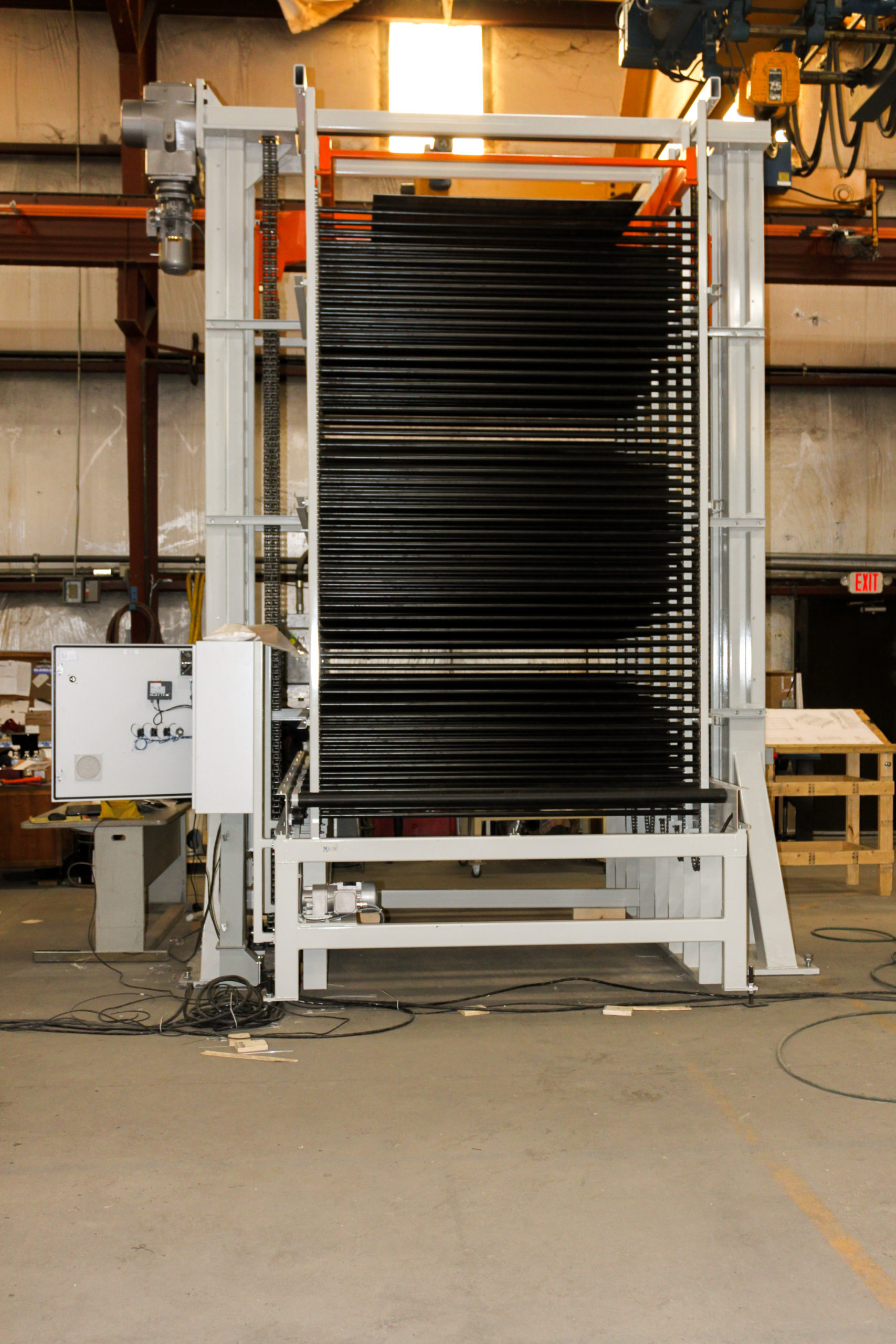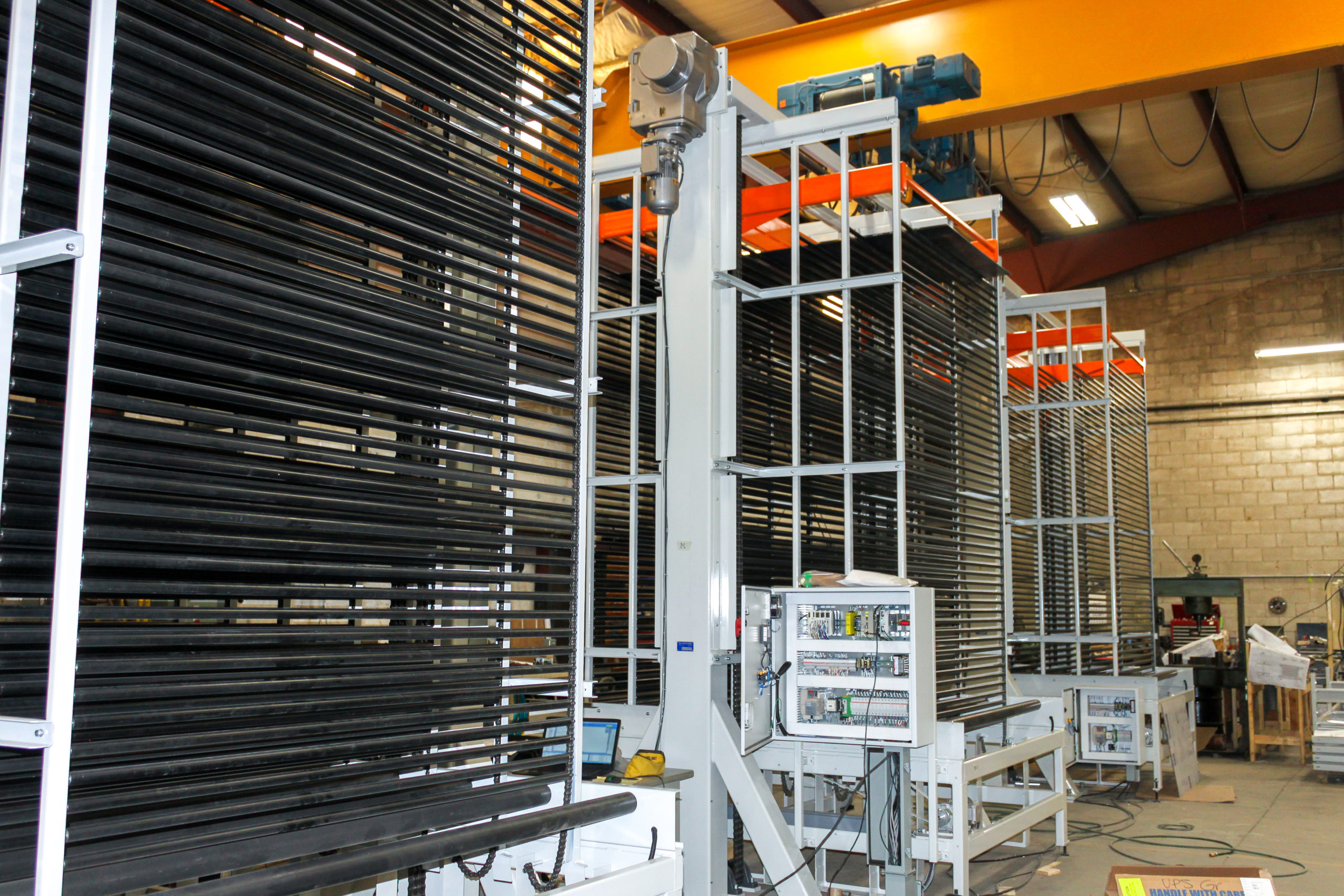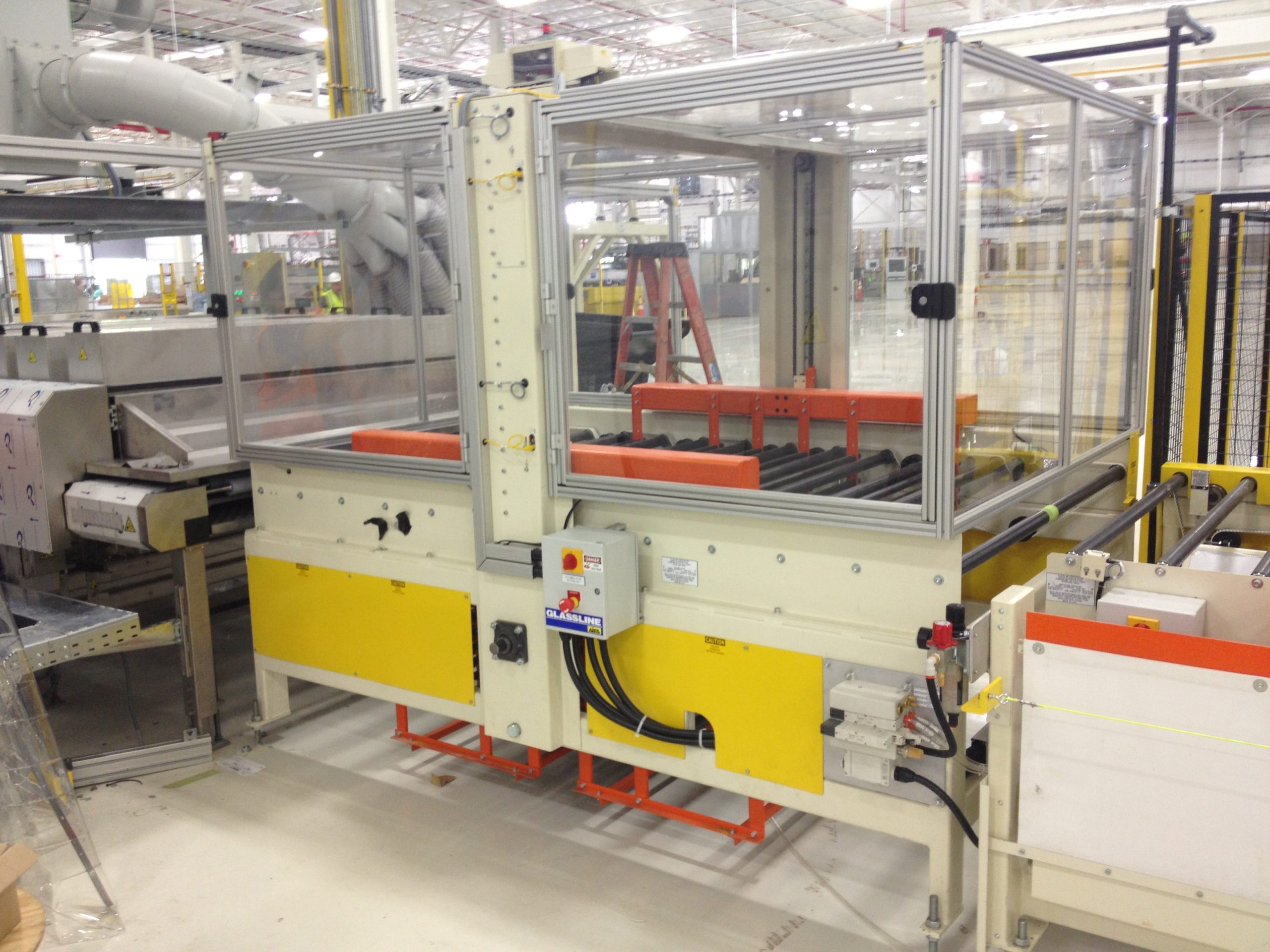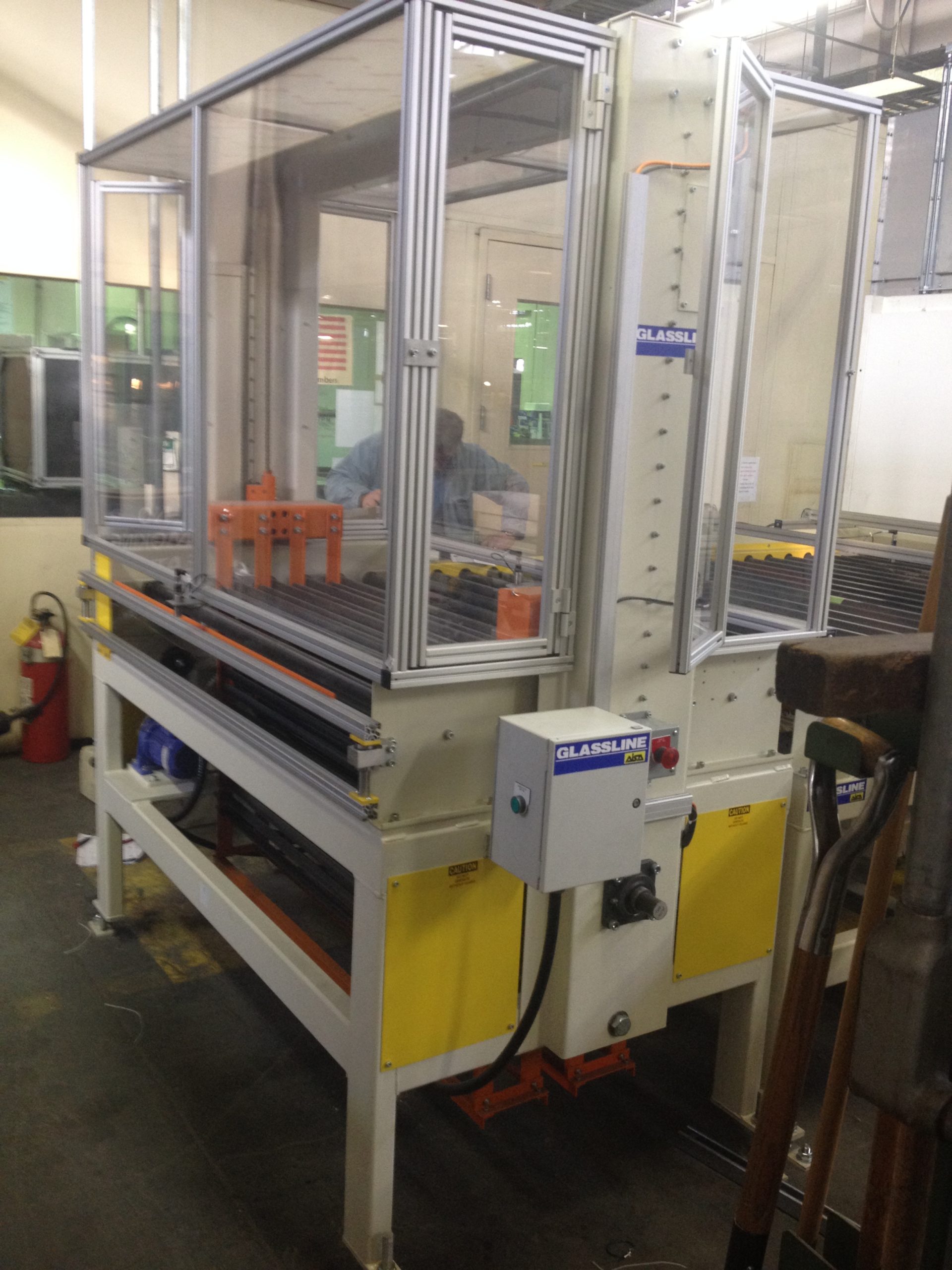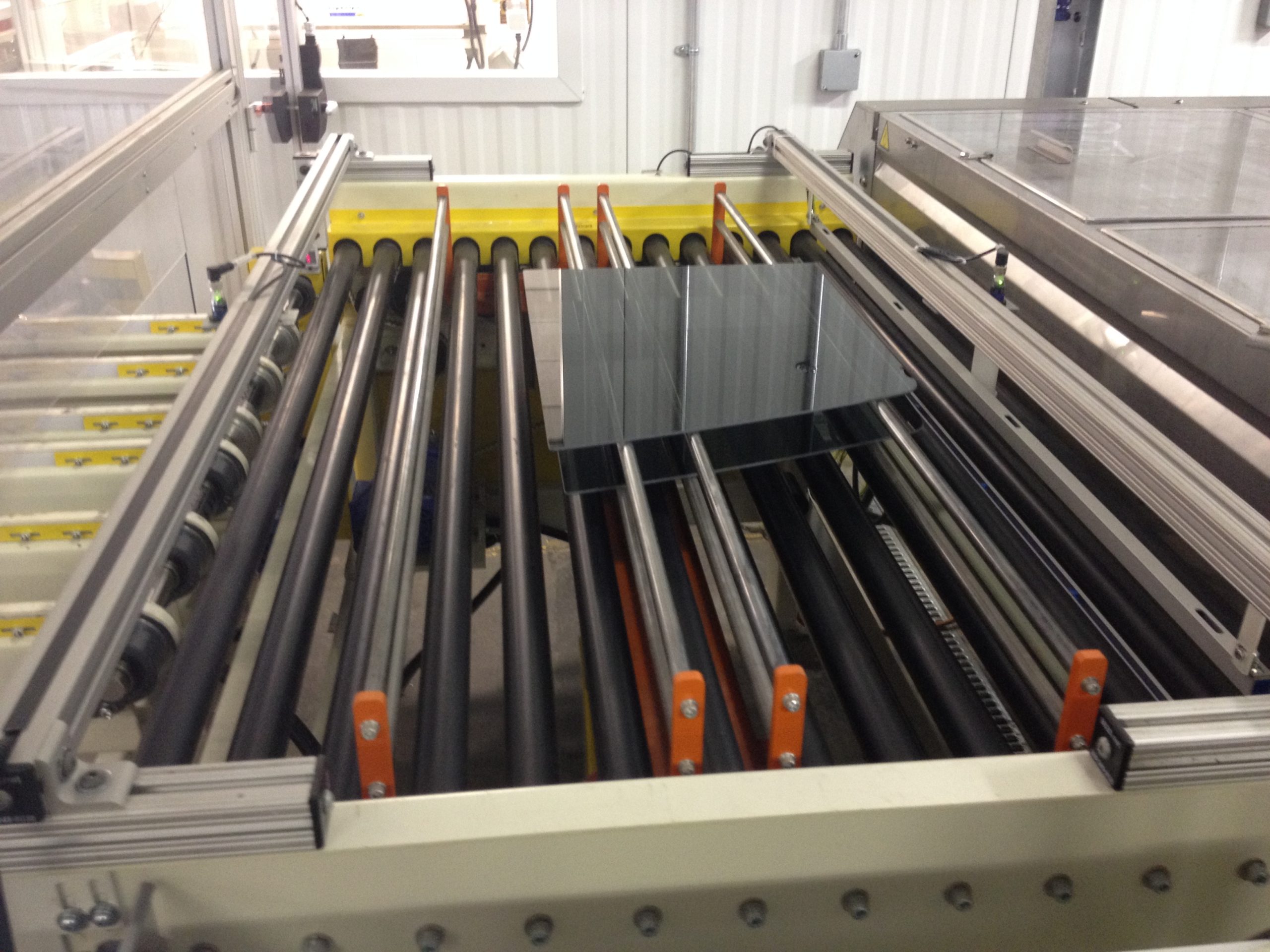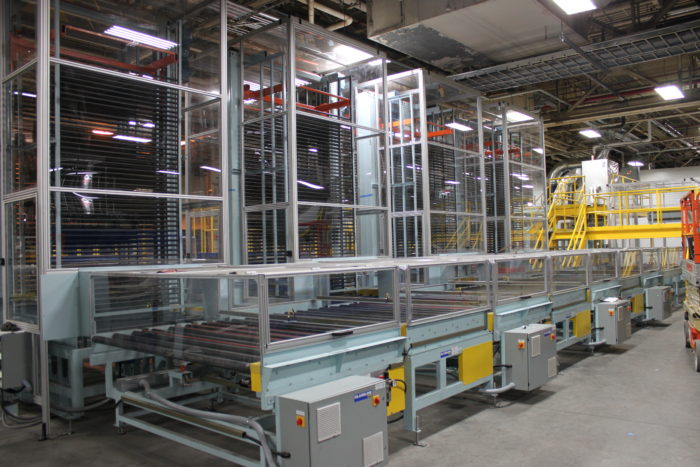
These units are used to temporarily store glass, acting as a process-flow buffer. An accumulator is normally placed before or after certain processes which may be affected by inconsistent piece flow, or processes which require nominal outages. For example, some tempering ovens may require a consistent piece flow to help maintain consistent processing temperature. An accumulator ahead of the furnace can be used in a normally full mode: if the upstream process stops for a short period, the accumulator can then feed the furnace with parts until the upstream process begins again. As another example, an accumulator might be used between an edging line and an inline drilling system. In this case, should the drilling system stop momentarily, parts in the edger can be accumulated without stopping the edger. The standard unit acts in a Last-In-First-Out mode of operation.
Vertical accumulators are normally constructed as several levels of horizontal poles which support the glass. Depending on the number of levels required, the poles can be constructed as a fixed frame, or the poles can be attached to chains. The chain type accumulator can provide for more levels of accumulation. It is also possible to store multiple parts per level to increase the storage capacity for smaller parts. Glass parts enter the accumulator on a conveyor built within the accumulator frame.
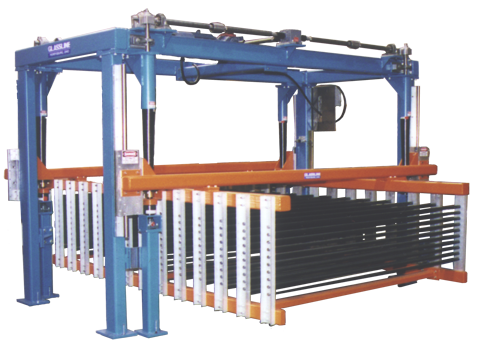
For brochure click here

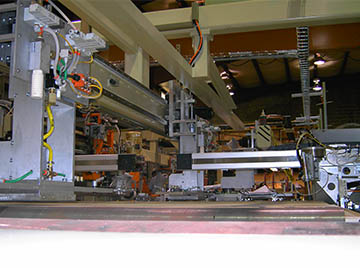 Breakout Machines
Breakout Machines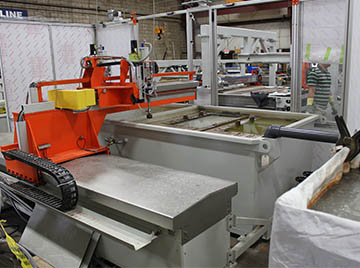 Waterjet Glass Cutting Machines
Waterjet Glass Cutting Machines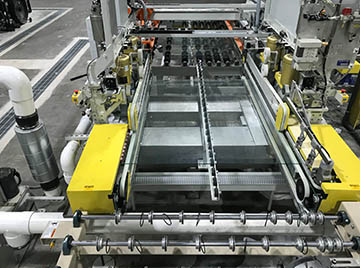 Rectangular Glass Edging/Seaming Machines
Rectangular Glass Edging/Seaming Machines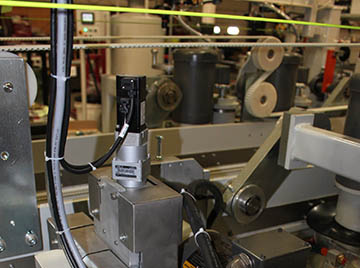 Edge Deletion Machines
Edge Deletion Machines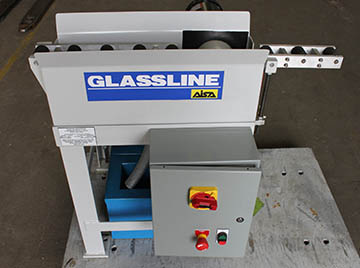 Manual Grinding Machines
Manual Grinding Machines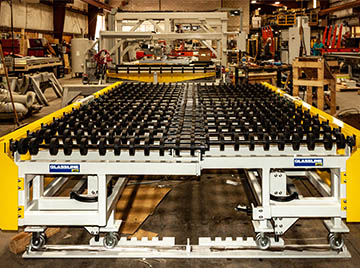 Laminated Glass Machines
Laminated Glass Machines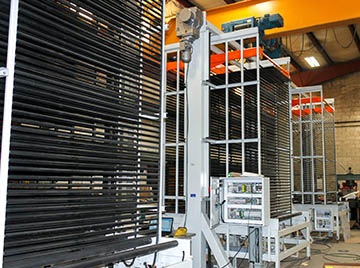 Material Handling Machines
Material Handling Machines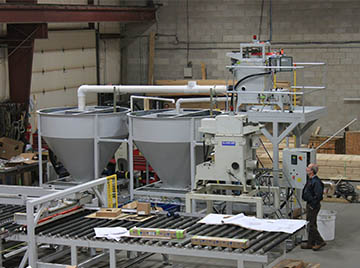 Centrifuge Filtration Systems
Centrifuge Filtration Systems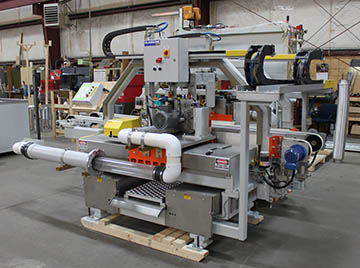 Other Special Glass Machines
Other Special Glass Machines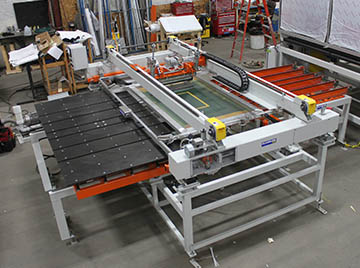 Silkscreen and Drying Printing Machines
Silkscreen and Drying Printing Machines
